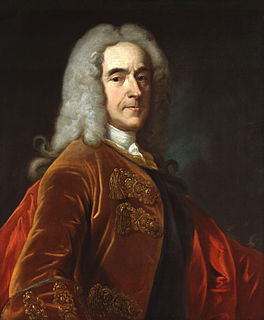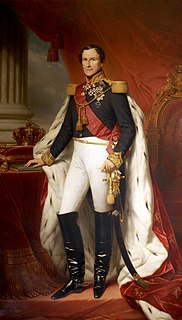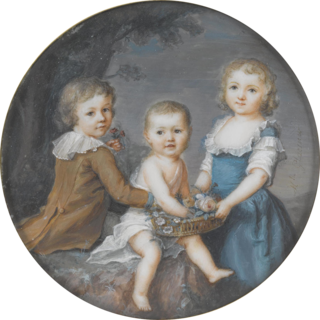 W
WLieutenant General Robert Stephenson Smyth Baden-Powell, 1st Baron Baden-Powell,, was a British Army officer, writer, founder and first Chief Scout of the world-wide Scout Movement, and founder, with his sister Agnes, of the world-wide Girl Guide / Girl Scout Movement. Baden-Powell authored the first editions of the seminal work Scouting for Boys, which was an inspiration for the Scout Movement.
 W
WLieutenant General Sir George Tom Molesworth Bridges known as Sir Tom Bridges, was a British military officer and the 19th Governor of South Australia.
 W
WSir Alexander Hargreaves Brown, 1st Baronet was an English Liberal Party, and later Liberal Unionist, politician who sat in the House of Commons from 1868 to 1906.
 W
WWilliam Cadogan, 1st Earl Cadogan, was an Irish-born British army officer whose active military service began during the Williamite War in Ireland in 1689 and ended with the suppression of the 1715 Jacobite Rebellion. A close associate and confidant of the Duke of Marlborough, he was also a diplomat and Whig politician who sat in the English and British House of Commons from 1705 until 1716 when he was raised to the peerage.
 W
WLieutenant-General James Thomas Brudenell, 7th Earl of Cardigan, was an officer in the British Army who commanded the Light Brigade during the Crimean War. He led the Charge of the Light Brigade at the Battle of Balaclava.
 W
WField Marshal Richard Temple, 1st Viscount Cobham was a British soldier and Whig politician. After serving as a junior officer under William III during the Williamite War in Ireland and during the Nine Years' War, he fought under John Churchill, 1st Duke of Marlborough, during the War of the Spanish Succession. During the War of the Quadruple Alliance Temple led a force of 4,000 troops on a raid on the Spanish coastline which captured Vigo and occupied it for ten days before withdrawing. In Parliament he generally supported the Whigs but fell out with Sir Robert Walpole in 1733. He was known for his ownership of and modifications to the estate at Stowe and for serving as a political mentor to the young William Pitt.
 W
WSir Edward Cust, 1st Baronet, KCH was a British soldier, politician and courtier.
 W
WSir William Henry Don, 7th Baronet (1825–1862) was a British baronet and actor.
 W
WCaptain William Hay CB was the second and last junior Joint Commissioner of Police of the Metropolis, one of two heads of the London Metropolitan Police.
 W
WGeneral Sir Charles Frederic Keightley, was a British Army officer during and following the Second World War. After serving with distinction during the Second World War – becoming the army's youngest corps commander – he had a distinguished postwar career and was the Governor of Gibraltar from 1958 to 1962.
 W
WGeorge Wyndham, 1st Baron Leconfield, was a British soldier and peer.
 W
WLeopold I was the first King of the Belgians, reigning between July 1831 and December 1865.
 W
WCaptain John Norwood VC was an English recipient of the Victoria Cross, the highest and most prestigious award for gallantry in the face of the enemy that can be awarded to British and Commonwealth forces. He was educated at Exeter College, Oxford.
 W
WGeneral Sir Loftus William Otway, CB was an experienced and professional cavalry commander of British forces during the Peninsula War who saw extensive service under Sir John Moore in the Corunna Campaign and Wellington in the remainder of the campaign. He also worked training Portuguese troops and spent time serving in Ireland during the 1798 rebellion and Canada. Otway retired after the Peninsula War and was honoured several times for his war service by both the British and Spanish royal families.
 W
WMajor-General Hon. Sir William Ponsonby was an Anglo-Irish politician and British Army officer who served in the Peninsula War and was killed at the Battle of Waterloo.
 W
WGeneral Sir James Yorke Scarlett was a British Army officer and hero of the Crimean War who led the Charge of the Heavy Brigade during the Battle of Balaclava on 25 October 1854.
 W
WLord Robert Seymour was a British politician who sat in the Irish House of Commons from 1771 to 1776 and in the British House of Commons from 1771 to 1807. He was known as Hon. Robert Seymour-Conway until 1793, when his father was created a marquess; he then became Lord Robert Seymour-Conway, but dropped the surname of Conway after his father's death in 1794.
 W
WCharles Talbot, 1st Duke of Shrewsbury, KG, PC was an English politician who was part of the Immortal Seven group that invited William III, Prince of Orange, to depose James II of England as monarch during the Glorious Revolution. He was appointed to several minor roles before the revolution, but came to prominence as a member of William's government. Born to Roman Catholic parents, he remained in that faith until 1679 when—during the time of the Popish Plot and following the advice of the divine John Tillotson—he converted to the Church of England. Shrewsbury took his seat in the House of Lords in 1680 and three years later was appointed Gentleman-Extraordinary of the Bedchamber, suggesting he was in favour at the court of Charles II.
 W
WSir James Matthew Stronge, 3rd Baronet DL, JP (25 November 1811 – 11 March 1885, succeeded to the baronetcy on the death of his 78-year-old father, Sir James Stronge 2nd baronet, on 2 December 1864. He was a member of the Stronge family and was born in Tynan Abbey, County Armagh. His mother was Isabella Calvert, Lady Stronge, the eldest daughter of Nicholas Calvert M.P., of Hunsdon House, Hertfordshire, and his wife The Hon. Frances Pery, daughter of the Viscount Pery.
 W
WColonel Thomas Wildman was a British Army officer during the Napoleonic Wars, a draftsman, and landowner.